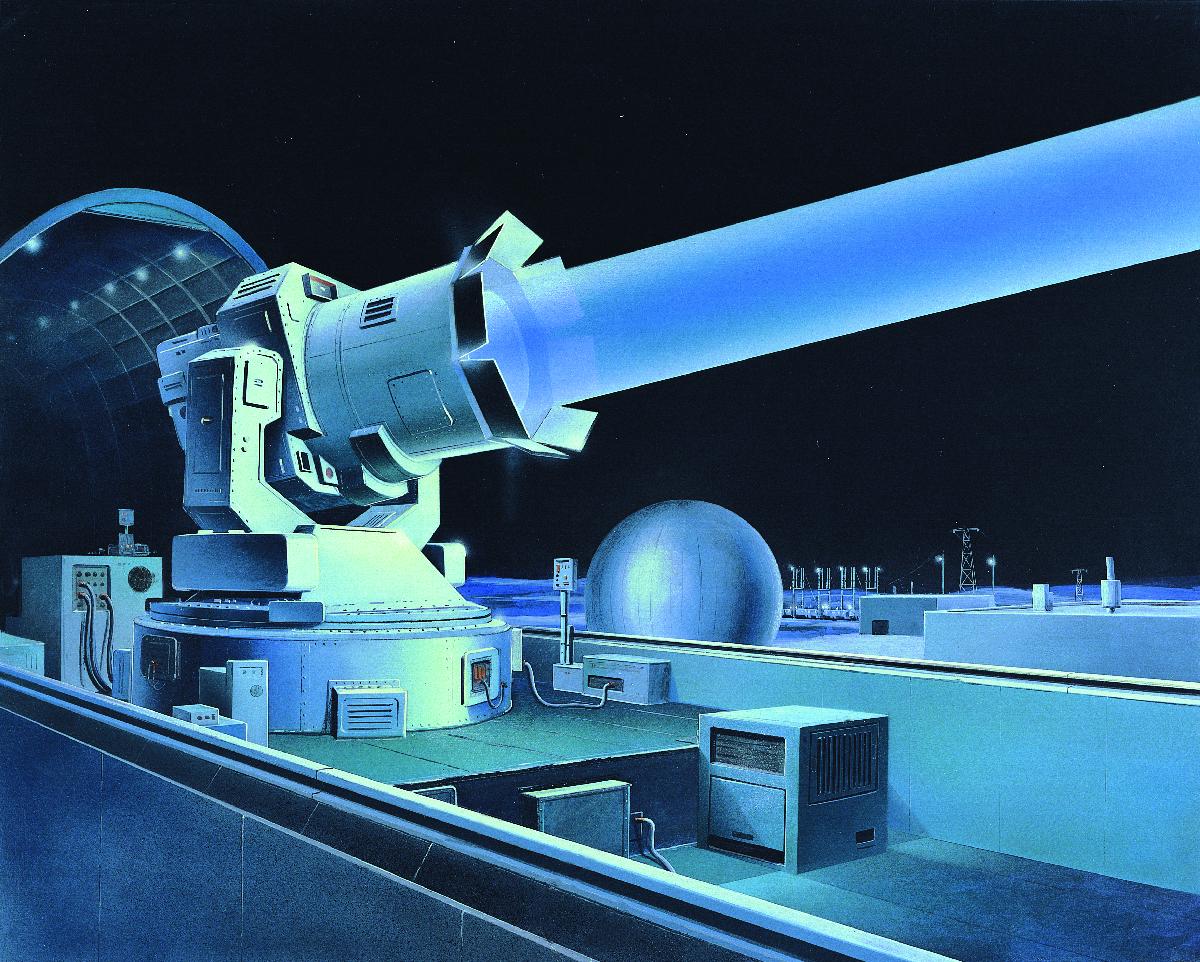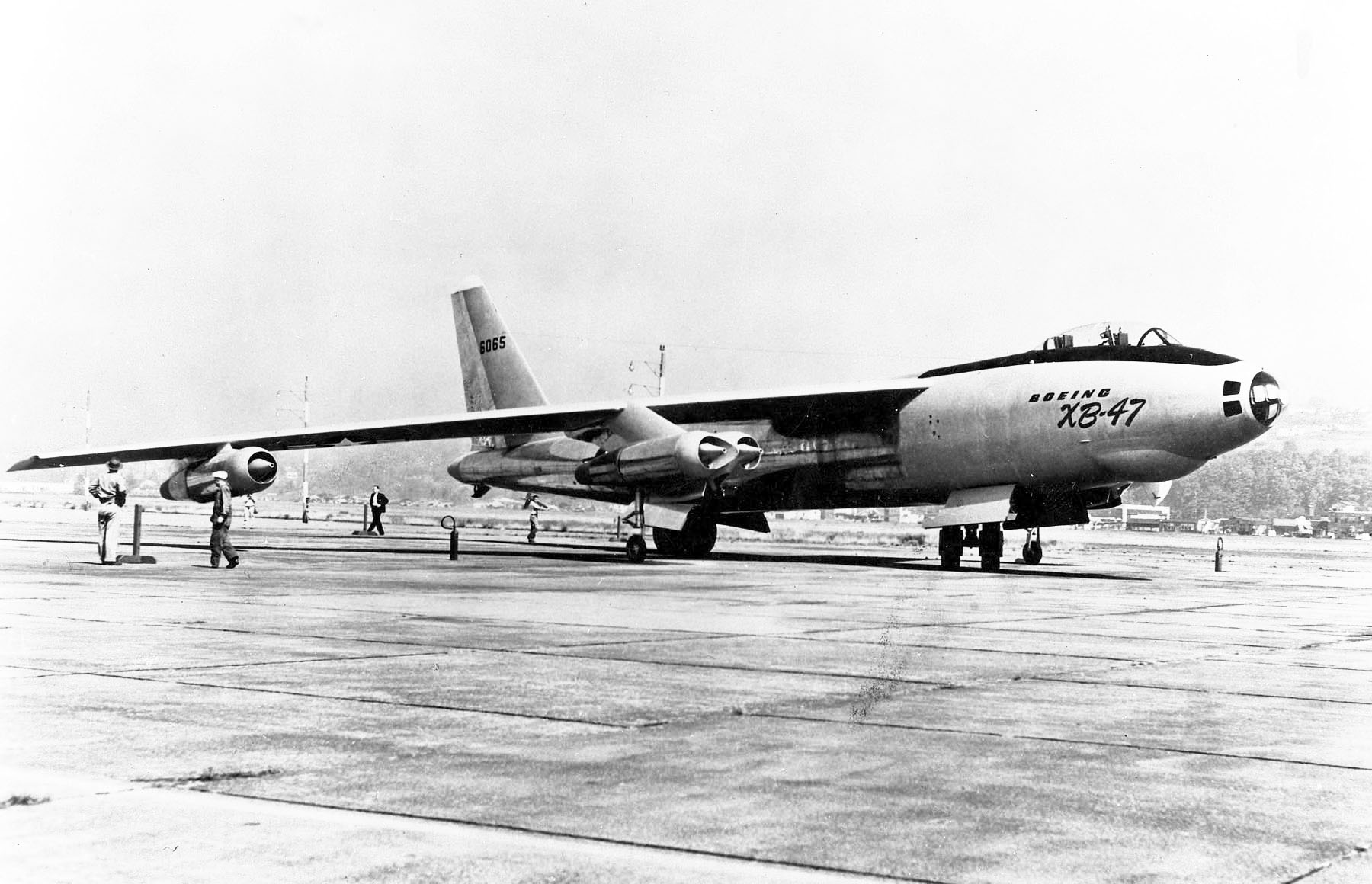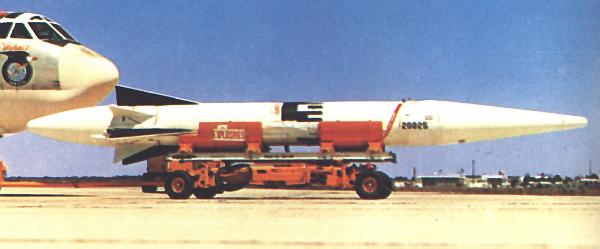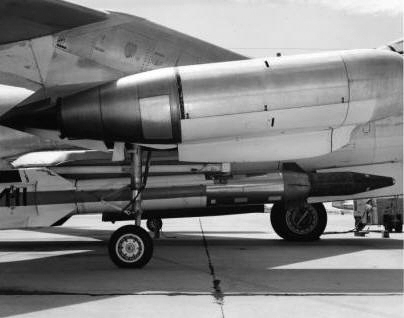|
Anti-satellite Weapon
Anti-satellite weapons (ASAT) are space weapons designed to incapacitate or destroy satellites for strategic or tactical purposes. Several nations possess operational ASAT systems. Although no ASAT system has been utilised in warfare, a few countries (China, India, Russia, United Kingdom and the United States) have successfully shot down their own satellites to demonstrate their ASAT capabilities in a show of force. ASATs have also been used to remove decommissioned satellites. ASAT roles include: defensive measures against an adversary's space-based and nuclear weapons, a force multiplier for a nuclear first strike, a countermeasure against an adversary's anti-ballistic missile defence (ABM), an asymmetric counter to a technologically superior adversary, and a counter-value weapon. Use of ASATs generates space debris, which can collide with other satellites and generate more space debris. A cascading multiplication of space debris could cause Earth to suffer from Ke ... [...More Info...] [...Related Items...] OR: [Wikipedia] [Google] [Baidu] |
Space Weapon
Space weapons are weapons used in space warfare. They include weapons that can attack space systems in orbit (i.e. anti-satellite weapons), attack targets on the earth from space or disable missiles travelling through space. In the course of the militarisation of space, such weapons were developed mainly by the contesting superpowers during the Cold War, and some remain under development today. Space weapons are also a central theme in military science fiction and sci-fi video games. Space-to-space weapons The Soviet Almaz secret military space station program was equipped with a fixed 23mm autocannon to prevent hostile interception or boarding by hostile forces. This was the first and so far the only weapon to be fired in space. The Soviet unmanned Polyus weapons platform was designed to be equipped with a megawatt carbon-dioxide laser and a self-defense cannon. Earth-to-space weapons Anti-satellite weapons, which are primarily surface-to-space and air-to-space missile ... [...More Info...] [...Related Items...] OR: [Wikipedia] [Google] [Baidu] |
Earth
Earth is the third planet from the Sun and the only astronomical object known to harbor life. While large volumes of water can be found throughout the Solar System, only Earth sustains liquid surface water. About 71% of Earth's surface is made up of the ocean, dwarfing Earth's polar ice, lakes, and rivers. The remaining 29% of Earth's surface is land, consisting of continents and islands. Earth's surface layer is formed of several slowly moving tectonic plates, which interact to produce mountain ranges, volcanoes, and earthquakes. Earth's liquid outer core generates the magnetic field that shapes the magnetosphere of the Earth, deflecting destructive solar winds. The atmosphere of the Earth consists mostly of nitrogen and oxygen. Greenhouse gases in the atmosphere like carbon dioxide (CO2) trap a part of the energy from the Sun close to the surface. Water vapor is widely present in the atmosphere and forms clouds that cover most of the planet. More solar e ... [...More Info...] [...Related Items...] OR: [Wikipedia] [Google] [Baidu] |
High Virgo
The High Virgo, also known as Weapons System 199C (WS-199C), was a prototype air-launched ballistic missile (ALBM) jointly developed by Lockheed and the Convair division of General Dynamics during the late 1950s. The missile proved moderately successful and aided in the development of the later GAM-87 Skybolt ALBM. It was also used in early tests of anti-satellite weapons. Design and development As part of the WS-199 project to develop new strategic weapons for the United States Air Force's Strategic Air Command, the Lockheed Corporation and the Convair division of General Dynamics proposed the development of an air-launched ballistic missile, to be carried by the Convair B-58 Hustler supersonic medium bomber.Parsch 2005 In early 1958 the two companies were awarded a contract for development of the weapon, designated WS-199C and given the code-name "High Virgo". While the project was intended to be strictly a research-and-development exercise, it was planned that the weapon woul ... [...More Info...] [...Related Items...] OR: [Wikipedia] [Google] [Baidu] |
Lockheed Corporation
The Lockheed Corporation was an American aerospace manufacturer. Lockheed was founded in 1926 and later merged with Martin Marietta to form Lockheed Martin in 1995. Its founder, Allan Lockheed, had earlier founded the similarly named but otherwise-unrelated Loughead Aircraft Manufacturing Company, which was operational from 1912 to 1920. History Origins Allan Loughead and his brother Malcolm Loughead had operated an earlier aircraft company, Loughead Aircraft Manufacturing Company, which was operational from 1912 to 1920. The company built and operated aircraft for paying passengers on sightseeing tours in California and had developed a prototype for the civil market, but folded in 1920 due to the flood of surplus aircraft deflating the market after World War I. Allan went into the real estate market while Malcolm had meanwhile formed a successful company marketing brake systems for automobiles. On December 13, 1926, Allan Lockheed, Jack Northrop, John Northrop, Kenneth K ... [...More Info...] [...Related Items...] OR: [Wikipedia] [Google] [Baidu] |
Explorer 6
Explorer 6, or S-2, was a NASA satellite, launched on 7 August 1959, at 14:24:20 GMT. It was a small, spheroidal satellite designed to study trapped radiation of various energies, galactic cosmic rays, geomagnetism, radio propagation in the upper atmosphere, and the flux of micrometeorites. It also tested a scanning device designed for photographing the Earth's cloud cover. On 14 August 1959, Explorer 6 took the first photos of Earth from a satellite. Experiments Beacon (108 and 378 MHz) This experiment measured the electron density near the satellite. The observational equipment comprised two coherent transmitters operating at 108 and 378 MHz. Doppler difference frequency and change in Faraday rotation of the 108-MHz signal were observed. Signals were observed from the receiving station at Hawaii for 20 to 70 minutes during each of eight passes during 11 days. Severe fading and a strong magnetic storm added to difficulties in data interpretation. The 378-MHz beacon tr ... [...More Info...] [...Related Items...] OR: [Wikipedia] [Google] [Baidu] |
X-248 Altair
The Altair was a solid-fuel rocket with a fiberglass casing, initially developed for use as the third stage of Vanguard rockets in 1959. It was manufactured by Allegany Ballistics Laboratory (ABL) as the X-248. It was also sometimes called the Burner 1. Altair The X-248 was one of two third-stage designs used during Project Vanguard. Early launches used a stage developed by the Grand Central Rocket Company, but later launches used the X-248 which enabled the Vanguard to launch more massive payloads. The X-248 was used as the second stage of some early Thor flights. These vehicles were designated "Thor-Burner". Altairs were used as the third stage of early Delta rockets. The fourth stage of the Scout rocket also used the "Altair" stage. Altair 2 The Altair 2 (X-258) Thiokol solid rocket engine first flew in 1963 and was the kick stage motor for Delta D, Scout A, Scout X-4, and Orbiting Vehicle satellites. It was retired in 1973. See also * Algol (rocket stage) * Castor (r ... [...More Info...] [...Related Items...] OR: [Wikipedia] [Google] [Baidu] |
MGM-29 Sergeant
The MGM-29 Sergeant was an American short-range, solid fuel, surface-to-surface missile developed by the Jet Propulsion Laboratory. The missiles were built by Sperry Utah Company. The Sergeant was the third and last in a series of JPL rockets for the US Army whose names correspond to the progression in Army enlisted ranks, starting with Private and Corporal. Development The Sergeant was originated during 1948 at JPL. Due to the large workload of the Corporal program rocket motor development for the Sergeant was transferred to the Redstone Division of the Thiokol Corporation. Due to the failure of the Sergeant program to develop rapidly the early Sergeant was terminated in April 1951.Cagle, Mary T., History of the Sergeant Weapon System, p 15, U.S. Army Missile Command, Redstone Arsenal, Alabama, 1972 Another Army missile program, the Hermes program had developed the Hermes A2 another solid fueled missile. The Hermes RV-A-10 (A2) was successful but not pursued with the motor serv ... [...More Info...] [...Related Items...] OR: [Wikipedia] [Google] [Baidu] |
B-47 Stratojet
The Boeing B-47 Stratojet (Boeing company designation Model 450) is a retired American long-range, six-engined, turbojet-powered strategic bomber designed to fly at high subsonic speed and at high altitude to avoid enemy interceptor aircraft. The primary mission of the B-47 was as a nuclear bomber capable of striking targets within the Soviet Union. Development of the B-47 can be traced back to a requirement expressed by the United States Army Air Forces (USAAF) in 1943 for a reconnaissance bomber that harnessed newly developed jet propulsion. Another key innovation adopted during the development process was the swept wing, drawing upon captured German research. With its engines carried in nacelles underneath the wing, the B-47 represented a major innovation in post-World War II combat jet design, and contributed to the development of modern jet airliners. Suitably impressed, in April 1946, the USAAF ordered two prototypes, designated "XB-47"; on 17 December 1947, the first ... [...More Info...] [...Related Items...] OR: [Wikipedia] [Google] [Baidu] |
Air-launched Ballistic Missile
An air-launched ballistic missile or ALBM is a ballistic missile launched from an aircraft. An ALBM allows the launch aircraft to stand off at long distances from its target, keeping it well outside the range of defensive weapons like anti-aircraft missiles and interceptor aircraft. Historically, once launched the missile was essentially immune to interception due to a lack of capable anti-ballistic missiles, with those few that did exist being limited to known static positions. This combination of features allowed a strategic bomber to present a credible deterrent second-strike option in an era when improving anti-aircraft defences appeared to be rendering conventional bombers obsolete. However, by the 1990's surface-to-air missile technology had innovated to the point of allowing the interception of such weapons (especially in their terminal phase) from road mobile systems, albeit at a lower PoK. By the early 21st century capable, dedicated, ABM systems from several nations had b ... [...More Info...] [...Related Items...] OR: [Wikipedia] [Google] [Baidu] |
Bold Orion
The Bold Orion missile, also known as Weapons System 199B (WS-199B), was a prototype air-launched ballistic missile (ALBM) developed by Martin Aircraft during the 1950s. Developed in both one- and two-stage designs, the missile was moderately successful in testing, and helped pave the way for development of the GAM-87 Skybolt ALBM. In addition, the Bold Orion was used in early anti-satellite weapons testing, performing the first interception of a satellite by a missile. Design and development The Bold Orion missile was developed as part of Weapons System 199, initiated by the United States Air Force (USAF) in response to the U.S. Navy's Polaris program, with funding authorised by the United States Congress in 1957.Yengst 2010, p.37. The purpose of WS-199 was the development of technology that would be used in new strategic weapons for the USAF's Strategic Air Command, not to deliver operational weapons; a primary emphasis was on proving the feasibility of an air-launched ballist ... [...More Info...] [...Related Items...] OR: [Wikipedia] [Google] [Baidu] |
Glenn L
Glenn may refer to: Name or surname * Glenn (name) * John Glenn, U.S. astronaut Cultivars * Glenn (mango) * a 6-row barley variety Places In the United States: * Glenn, California * Glenn County, California * Glenn, Georgia, a settlement in Heard County * Glenn, Illinois * Glenn, Michigan * Glenn, Missouri * University, Orange County, North Carolina, formerly called Glenn * Glenn Highway in Alaska Organizations *Glenn Research Center, a NASA center in Cleveland, Ohio See also * New Glenn New Glenn is a heavy-lift orbital launch vehicle in development by Blue Origin. Named after NASA astronaut John Glenn, design work on the vehicle began in 2012. Illustrations of the vehicle, and the high-level specifications, were initial ..., a heavy-lift orbital launch vehicle * * * Glen, a valley * Glen (other) {{disambiguation, geo ... [...More Info...] [...Related Items...] OR: [Wikipedia] [Google] [Baidu] |
Strategic Missile
An intercontinental ballistic missile (ICBM) is a ballistic missile with a range greater than , primarily designed for nuclear weapons delivery (delivering one or more thermonuclear warheads). Conventional, chemical, and biological weapons can also be delivered with varying effectiveness, but have never been deployed on ICBMs. Most modern designs support multiple independently targetable reentry vehicles (MIRVs), allowing a single missile to carry several warheads, each of which can strike a different target. Russia, the United States, China, France, India, the United Kingdom, and North Korea are the only countries known to have operational ICBMs. Early ICBMs had limited precision, which made them suitable for use only against the largest targets, such as cities. They were seen as a "safe" basing option, one that would keep the deterrent force close to home where it would be difficult to attack. Attacks against military targets (especially hardened ones) still demanded the ... [...More Info...] [...Related Items...] OR: [Wikipedia] [Google] [Baidu] |






